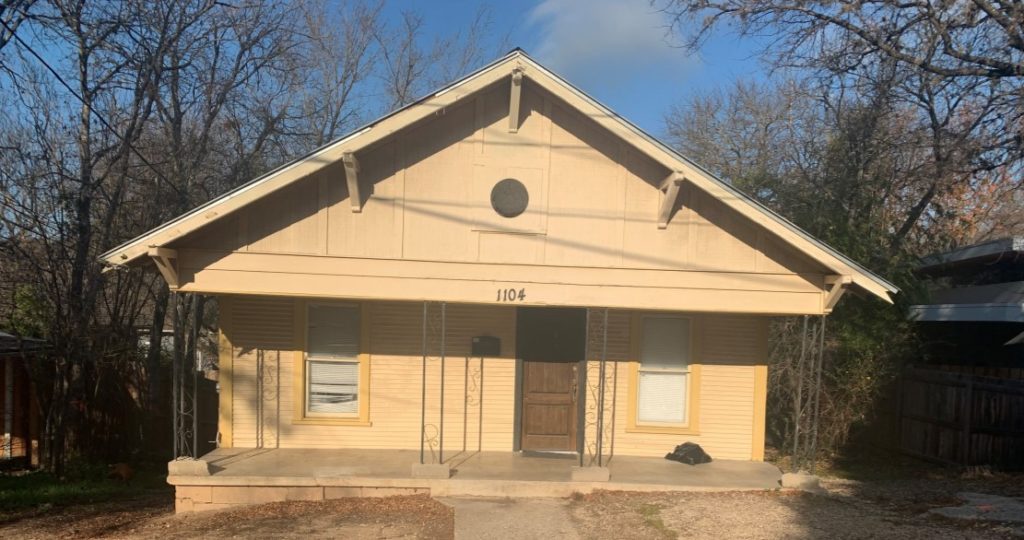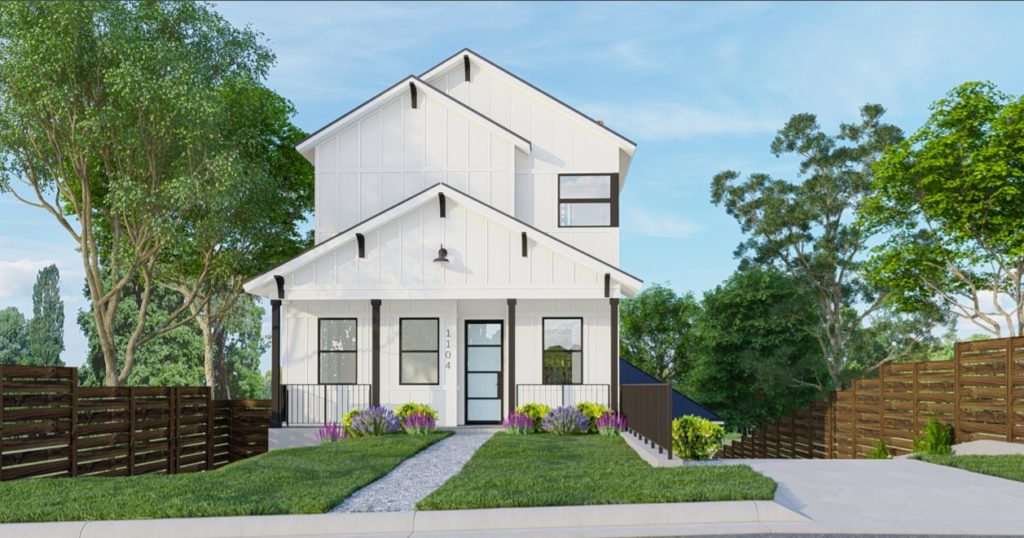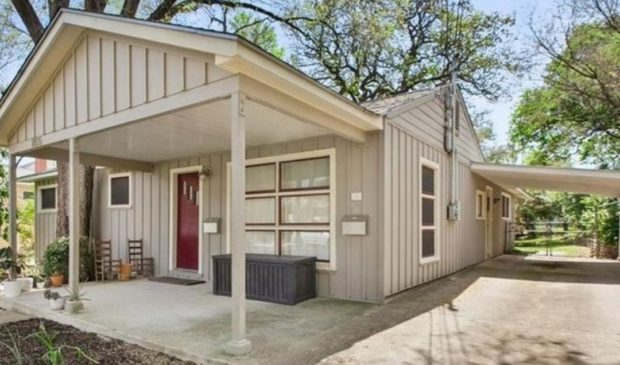Photo by city of Austin: 1805 Waterston Ave.
Clarksville demolition cases reveal challenges faced by preservationists
Thursday, September 30, 2021 by
Kali Bramble The Historic Landmark Commission grappled with its own limitations this past Monday as it oversaw the outcome of two Clarksville demolition cases with palpable disappointment.
The two homes, located at 1805 Waterston Ave. and 1104 Toyath St., are both contributing properties in the Clarksville National Register historic district whose owners seek to replace them with entirely new structures. Despite objections from the neighborhood, commissioners approved the demolition permit for the Waterston home, while it continues to butt heads over new plans for Toyath Street.
Clarksville, one of Austin’s oldest neighborhoods, has seen an increasing number of its homes torn down as the city’s real estate market booms. The neighborhood’s central location and historic charm have attracted an influx of property developers, each with varying willingness to work with preservation efforts.
Commissioners found themselves backed into a corner once again with the application to demolish 1805 Waterston Ave. The home was built in 1952 for Huston-Tillotson alumni Kelly and Johnnie Meador, who worked at the Texas State School for the Deaf and ran an electronics repair shop.
The demolition’s most vocal opponent was the Clarksville Community Development Corporation, which has repeatedly asked the landmark commission to delay its decision, citing concerns over the property developer’s transparency. CCDC President Mary Reed reported that the new owner, Nalle Custom Homes, has failed to deliver on promises to respect Clarksville design standards and communicate its plans with the surrounding community.
Unfortunately for concerned parties, the Historic Landmark Commission’s bylaws enforce a 180-day limit on postponing such cases, forcing the commission either to approve the permit or to begin the process of initiating historic zoning. Feeling that the property did not meet sufficient criteria for landmark designation, members voted 7-3 to approve the demolition permit, with commissioners Terri Myers, Blake Tollett, and Anissa Castillo in opposition.
“We have limited tools,” Commissioner Ben Heimsath said, before voting to approve the permit release. “I think that we did what we were supposed to, and we can only hope that better voices would prevail. Unfortunately in this case they did not.”

The house that currently sits at 1104 Toyath St.
Next on the docket was 1104 Toyath St., a property further along in the process that has compounded tensions between developers and preservationists. Having secured the board’s approval for demolition, the project has now entered its advisory stage, under which the commission reviews the plan for construction and issues recommendations based on its compatibility with the surrounding neighborhood.
Given Clarksville’s designation as a National Register district, which offers fewer protections than a local historic district, these recommendations cannot be explicitly enforced. Instead, it is up to property developers to heed the commission’s advice and to make the final call.
In the case of 1104 Toyath, real estate developer Paradisa Homes has deviated significantly from the landmark commission’s advice. The proposed construction calls for a sleek, three-story structure outfitted with a pool and wraparound rooftop deck that Heimsath acknowledged “will not sit comfortably” within the neighborhood. Neighboring Clarksville resident Olivia Ruiz spoke to this conflict, citing concerns that the new home will loom over surrounding properties and disrupt the integrity of the area.

Rendering of the proposed house at 1104 Toyath St., courtesy of the city of Austin
Imploring Paradisa Homes to return to the Architectural Committee to reconsider its design, the commission unanimously voted to postpone approval of the plans.
“We have limited tools at our disposal, so we cannot stop designs like this from going up (in Clarksville),” Commissioner Kelly Little said. “If developers would at least meet with the neighborhood and try to work with the communities they are building in, it would go a long way.”
Referencing the applicants’ indifference toward participating in such conversations, Chair Myers voiced her frustration: “It flies in the face of this historic African American community that was established right after Emancipation.”
“This is something we may want to discuss in the future, whether or not the city has the will to protect and preserve Clarksville,” she said. “There is a provision for City Council to designate local historic districts that we may want to take up, especially since we are looking at a new equity-based preservation plan.”
Currently only seven neighborhoods have secured local historic district status, which provide the strongest protections against incoming real estate development. Challenging ambitions to add Clarksville to this list are new laws passed by the Texas Legislature earlier this month, which require a 75 percent supermajority vote of the Historic Landmark Commission, Planning Commission and City Council to approve local historic district zoning without unanimous approval of property owners (a virtual impossibility).
In the meantime, the landmark commission expects to see more Clarksville homes on its demolition docket. For more information on the history of Clarksville and its preservation efforts, visit the CCDC website.
The Austin Monitor’s work is made possible by donations from the community. Though our reporting covers donors from time to time, we are careful to keep business and editorial efforts separate while maintaining transparency. A complete list of donors is available here, and our code of ethics is explained here.
You're a community leader
And we’re honored you look to us for serious, in-depth news. You know a strong community needs local and dedicated watchdog reporting. We’re here for you and that won’t change. Now will you take the powerful next step and support our nonprofit news organization?





